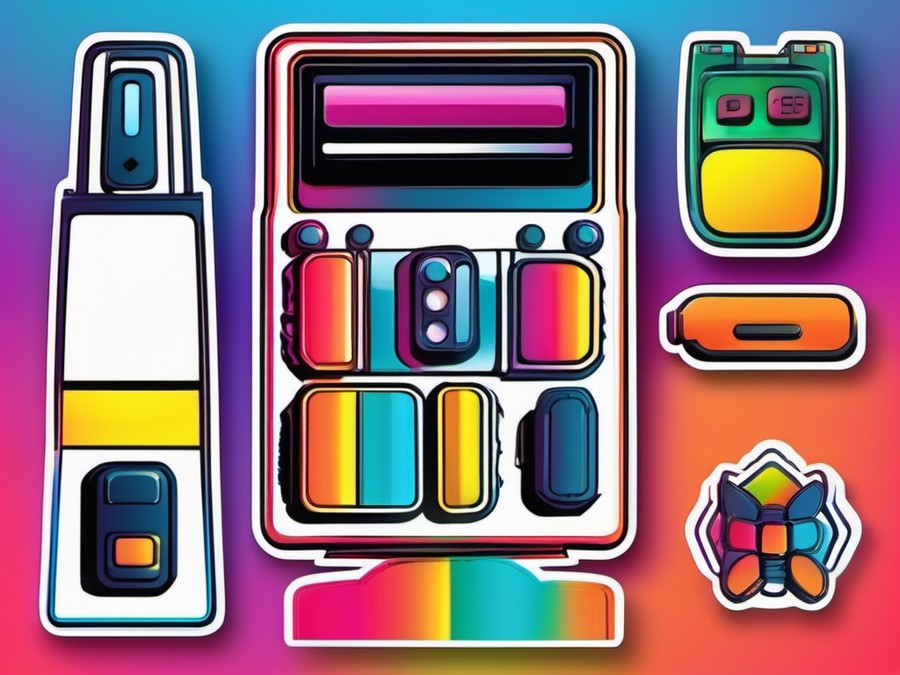· Charlotte Will · Remote Controls · 8 min read
What is a Learning Remote Control?
Discover the benefits and ease of use of a learning remote control. Learn how to program your devices for seamless home entertainment or professional presentations. Upgrade your remote experience today!

Ever wished your remote control could learn new tricks? Welcome to the world of learning remote controls. These nifty devices are designed to make your life easier by programming themselves to control multiple entertainment devices. Let’s dive into what makes a learning remote special, how it works, and why you should consider using one.
Introduction to Learning Remotes
Understanding Basic Remote Controls
Before we get into the details of learning remotes, let’s take a quick look at the standard remote controls you might be familiar with. Traditional remotes are designed to control a specific device, such as your TV or DVD player. They use infrared (IR) technology to send commands from the remote to the device.
Evolution of Remote Control Technology
As technology has advanced, so have remote controls. Learning remotes are a step up from basic IR remotes and universal remotes. While universal remotes can control multiple devices, they require you to manually input the device codes. On the other hand, learning remotes can learn commands from your existing remotes—a real game-changer!
What Makes a Learning Remote Different?
The Core Concept
The key feature of a learning remote control is its ability to learn commands from other remotes. This means you don’t have to remember or input long device codes manually. Instead, the learning remote can pick up these commands and replicate them, making setup a breeze.
How Learning Remotes Work
Imagine teaching your remote how to turn on the TV. You simply point both remotes at each other, and with a few button presses, the learning remote captures the signal. It’s like magic! This process usually involves a code search function that allows the remote to scan for and learn the correct commands.
Benefits of Using a Learning Remote Control
Versatility and Compatibility
One of the major advantages of learning remotes is their versatility. Because they can learn commands from various devices, you can use one remote to control your TV, Blu-ray player, soundbar, and even some smart home devices. Say goodbye to juggling multiple remotes!
Cost Savings
With a learning remote, you don’t need to buy separate remotes for each device. This can save you a significant amount of money, especially if you have multiple entertainment systems or frequently upgrade your devices.
Ease of Use and Convenience
Setting up a learning remote is generally straightforward. No more hunting for the right code in a manual or online database. Once programmed, using your remote becomes second nature. It’s all about convenience and simplicity.
Future-Proofing Your Entertainment System
As technology evolves, so do devices. With a learning remote, you can easily incorporate new devices into your system without needing to replace the entire setup. This future-proofing ensures that your entertainment experience remains seamless and up-to-date.
How to Program a Learning Remote Control
Getting Started: Prerequisites
Before you begin programming your learning remote, ensure you have the original remotes for each device you want to control. You’ll also need a clear line of sight between the remotes during the programming process.
Step-by-Step Guide to Programming Your Learning Remote
Initial Setup: Locating Codes and Manuals
First, check if your learning remote comes with a manual or user guide. This will provide specific instructions for programming the remote. If not, don’t worry—most learning remotes follow a similar process.
Programming the Remote with Original Device Codes
- Turn on your learning remote and press the device button you want to program (e.g., TV, DVD).
- Hold down the “Setup” or “Learn” button until the indicator light comes on. This usually takes a few seconds.
- Point both remotes (the learning remote and the original device remote) at each other, about 3-6 inches apart.
- Press and hold the button on the original remote that corresponds to the function you want to program (e.g., “Power” for turning on the TV).
- Release both buttons once the learning remote indicates it has received the command, usually by turning off the indicator light.
- Repeat steps 3-5 for each function you want to program (e.g., volume up/down, mute).
Utilizing a Code Search Function
Some advanced learning remotes come with a code search function that automates the process. Here’s how it typically works:
- Turn on your learning remote and press the device button for the item you want to program (e.g., TV).
- Press and hold the “Setup” or “Learn” button until the indicator light comes on.
- Enter the code search mode, usually by following the instructions in your manual. This often involves pressing a sequence of buttons.
- Point the remote at your device and begin pressing the power button. If the device doesn’t turn on, try again with a different sequence until it works.
- Confirm the code by following the prompts, usually involving turning the device on and off a few times.
Troubleshooting Common Issues
If your learning remote isn’t working as expected, here are a few troubleshooting tips:
- Check the batteries: Ensure both remotes have fresh batteries.
- Line of sight: Make sure there’s a clear path between the remotes during programming.
- Distance: Keep the remotes close together, typically 3-6 inches apart.
- Manual reset: Sometimes, a simple reboot of the learning remote by removing and reinserting the batteries can resolve issues.
Types of Learning Remotes for TVs
Universal Learning Remotes
Universal learning remotes are designed to control multiple devices out of the box. They come with pre-programmed codes for various brands and can also learn commands from specific devices. These remotes offer a great balance between convenience and functionality.
Advantages and Disadvantages
Advantages:
- Versatility: Can control multiple devices with pre-programmed codes.
- Ease of use: Usually more straightforward to set up compared to brand-specific remotes. Disadvantages:
- Compatibility issues: May not work with all devices, especially newer or less common brands.
- Code limitations: Pre-programmed codes might not cover every function or device variation.
Brand-Specific Learning Remotes
Brand-specific learning remotes are designed to work with a particular brand of devices, such as Samsung or Sony. These remotes often offer more specialized features and better compatibility with the brand’s ecosystem.
Comparison with Universal Remotes
Brand-Specific Advantages:
- Specialized features: May include brand-specific shortcuts or advanced functions.
- Better compatibility: Usually work seamlessly with the brand’s devices, including newer models. Universal Advantages:
- Versatility: Can control a wider range of devices from different brands.
- Cost-effective: Often more affordable than buying multiple brand-specific remotes.
Real-World Applications and Examples
Enhancing Home Theater Experience
Imagine having a home theater with a TV, Blu-ray player, soundbar, and streaming device. With a learning remote, you can control all these devices with a single remote, creating a seamless entertainment experience. No more fumbling for the right remote or switching between them during movie night.
Controlling Multiple Devices with One Remote
Say you have a TV, cable box, and a smart speaker. By programming your learning remote with commands from each device’s original remote, you can control volume, mute the TV, and switch channels all from one device. It’s like having a personal assistant for your entertainment system!
Business Applications: Conference Rooms and Offices
In a professional setting, learning remotes can streamline presentations and meetings. With one remote, you can control the projector, audio system, and even some lighting features, ensuring smooth transitions between slides or videos. This efficiency can make a big difference in high-stakes meetings and conferences.
Frequently Asked Questions
What if My Device Doesn’t Respond to the Learning Remote?
If your device isn’t responding, double-check that you’re using the correct remote for programming and that both remotes have fresh batteries. Ensure there’s a clear line of sight between the remotes and that you’re close enough for the signals to reach each other. If problems persist, consult your remote’s manual or contact customer support for further assistance.
Can I Program Multiple Devices into One Remote?
Yes, one of the key benefits of a learning remote is its ability to control multiple devices. By repeating the programming process for each device, you can consolidate all your remotes into one.
Is There a Limit to the Number of Devices I Can Control?
The number of devices you can control with a learning remote usually depends on the remote’s capacity and memory. Most remotes can handle at least a dozen devices, but this can vary. Check your remote’s specifications for details.
Are There Any Security Concerns with Learning Remotes?
Learning remotes are designed to recognize and replicate legitimate signals from your original remotes. However, it’s always a good idea to be cautious about where you use your remote and what signals it might pick up. Generally, these remotes are safe to use in most environments.
How Often Should I Replace My Remote Control Batteries?
The frequency of replacing batteries depends on usage and the type of batteries used. Generally, remotes with rechargeable lithium-ion batteries last longer but may require occasional charging. For non-rechargeable batteries, it’s often a good idea to replace them every 6-12 months or as soon as you notice a drop in performance.
Conclusion
Learning remotes are a fantastic upgrade to traditional remote controls, offering versatility, convenience, and cost savings. Whether you’re setting up a home theater or managing a professional presentation, a learning remote can simplify your life and enhance your overall experience. So why not give it a try? You might find you can’t live without one!
For more on remote control technology, check out these articles:




